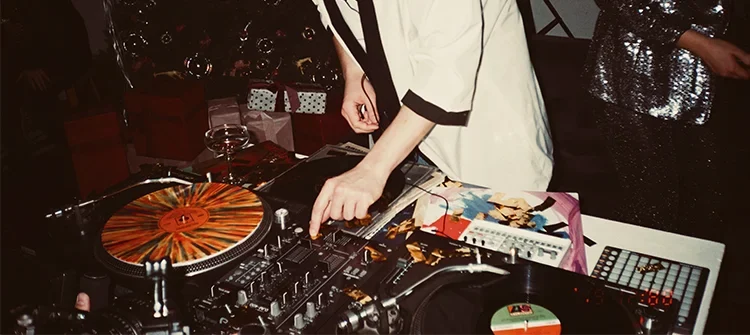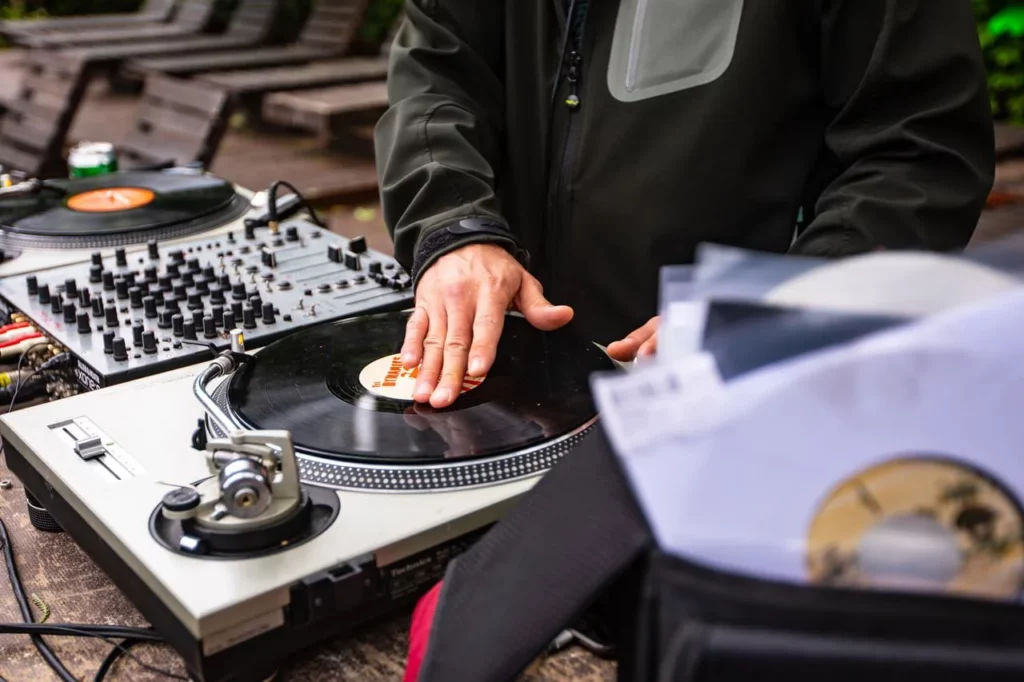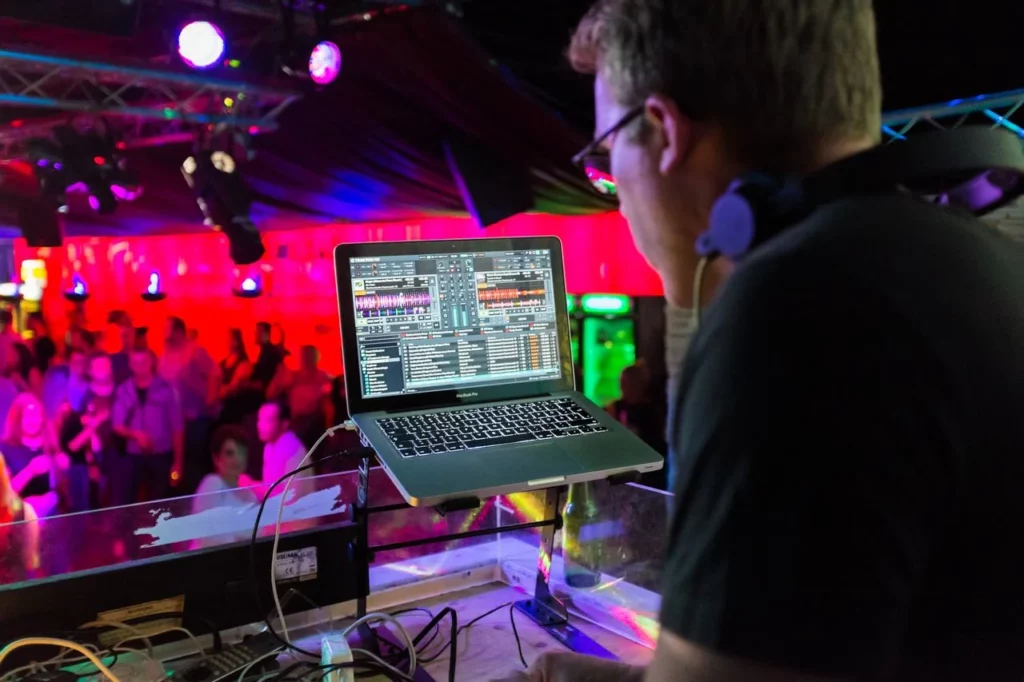
If you are thinking of starting a career as a DJ, you’re probably wondering what equipment you’ll need to get started. To do this you need to ask yourself a few questions, such as whether you are creating a DJ setup at home just as a hobby, or maybe you are a professional DJ who needs your own space to work, or perhaps you even aspire to become one yourself.
Monetize your bookings and amplify your DJ brand effortlessly.
If you know that, it will be easy to justify and manage the money you spend on your DJ setup.
In general, there are four ways to build a DJ setup:
- Turntable (Old School Vinyl or DVS).
- CDJ (This is the setup you’ll see in DJ clubs)
- DJ controller (An affordable start into DJing)
- Fully computerised DJ setup (DJ software)
It is key that you decide first what setup you are going after, because that will determine the rest of the equipment you’ll need for your home DJ studio.
Turntables for Vinyl Lovers

DJing in its purest form requires the use of a mixing desk and turntables. It should be noted that turntables (and their needles) are delicate equipment needing care in their handling, but offer unique sensations; braking, accelerating or scratching a vinyl is something unique.
In the same way, vinyl requires care, storage space and heavy transport, not to mention their cost. Many DJs have turntables in their studios, even if they also use CDJS or other equipment.
This is either because they already have them, or because of nostalgia or necessity. In any case, turntables are a preferred option for purists, and are gaining more popularity thanks to the resurgence of the use of vinyl.
Subscribe to our newsletter 🎧
CDJ: Enhance your creative power
The decline of vinyl over Compact Discs in the last 30 years brought the widespread CDJ players into the booth. They handle compact discs in a similar way as a turntable would.
CDJs play music in audio format as well as compressed files (mp3, wav, etc.). In medium to high range models, they usually include the option to play music from a USB storage unit, due to CDs entering disuse in favour of the compressed files.
But still, CDJs are one the most common and standard options in professional booths, and one preferred by many DJs.
DJ Controller: Top mixing devices

The use of controllers allows you to manage the main parameters a DJ uses on his mixer and players. For example:
- Controls of Deck players: Play, Cue, Pitch, Joggs…
- Equalization and gains of the different channels.
- Signal switches between channels: Faders and Cross-Fader.
- Effects sections.
Most of these devices include an internal sound card and are already integrated with the software developed by the manufacturers.
For example, companies like Native Instruments develop equipment for their own software (Traktor PRO 2). Pioneer DJ does the same with Rekordbox (although it also has them for Serato) and the rest of the brands tend to use them lately for Serato DJ and Virtual DJ.
Important to mention that a DJ controller can be used with different programmes, in addition to the dedicated one, by loading the appropriate MIDI configuration maps, although some functions can be lost, and this is not the usual method of use.
Controllers are one of the preferred options for novice DJs since there are inexpensive models with extensive handling possibilities that allow almost anyone to approach the experience of being in a booth.
Also, if you want to have a more satisfactory experience you should choose at least a mid-range DJ Controller model, which will have better, and more controls that will surely avoid early changes of equipment.
High-end controllers come to work with software autonomously (without the need for a computer) and they usually come with similar or even equal controllers to professional equipment, so many DJs decide to use them for their better portability, equal handling and prove to be cheaper options.
Fully computerised DJ setup

There is a wide variety of programmes such as Traktor, Serato, Virtual DJ and Rekordbox that allow you to mix music in digital formats such as MP3, WAV or FLAC from a computer or portable devices.
But it comes with a catch. The limitations of the keyboard, mouse or touch screen as controls. Also, you will have to consider that you may not have enough sound channels to pre-listen to other tracks to link, something essential in beatmatching.
Anyway, there is a workaround. By adding a sound card with four or more channels you could assign two of them to the music output, usually called Master, and two others for the pre-listening, or Monitor, so you can listen to other tracks and prepare the mix while the music is playing.
Again, it should be noted that you will still be limited to controlling a programme without real DJ hardware or equipment. It is logical to think that this mode can become unsatisfactory for beginners and that the ideal is to incorporate physical control equipment with which to take control of the software more effectively.
However, it is one of the most economical options if you want to get started in DJing.
TIP: If you want to throw online parties you should invest in a good laptop, capable of supporting both DJ software, speakers and monitors. In addition, take the time to learn keyboard shortcuts and more specific control of DJ software, so you will work efficiently.
You now have everything you need to create your home DJ setup and begin the awesome journey and hobby that is DJing. Join us at Wavezoo!
